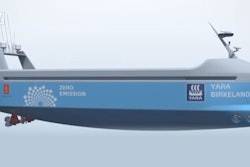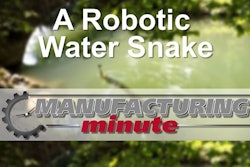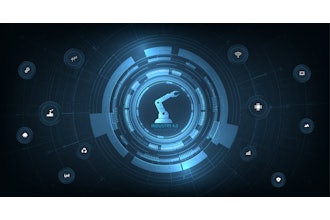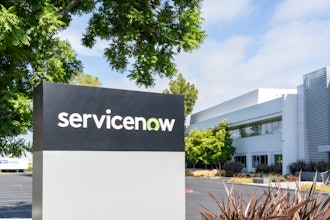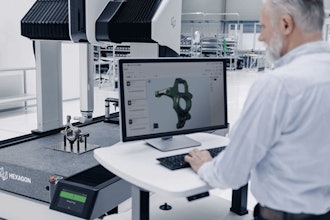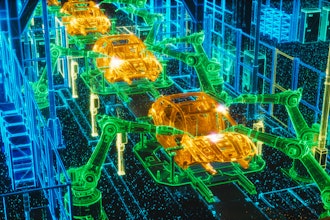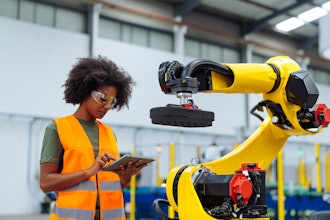We find ourselves in the middle of yet another technology revolution — the Internet of Things (IoT). What does this mean for us in the business of manufacturing things? It means change, of course, but also how we manage that change while keeping our processes running makes all the difference. A recent article on Manufacturing Business Technology by Chris Grove discussed this revolution from the perspective of cybersecurity. I completely agree with Mr. Grove on his assessment of those challenges. If we take even a further step back from the entire organization we can see that it is not just cybersecurity that needs to be redefined with this digitization of the manufacturing company but rather all of our processes and people that interact with all this new technology.
While most organizations have SCADA, other process control systems have largely been outside the purview of the information technology department. That model is increasingly coming under scrutiny and not just because of security. This IoT challenges this model as users and customers now expect seamless technology and support. When we discuss new technology or changes to that technology we must always keep the triangle equilateral on the people and process sides as well. I use a model called the Business Triangle.
If we make changes to our technology and not to our people and processes we will at a minimum not gain the planned return on investment (ROI) but more likely end up with more issues than we solved. If we wish to digitize the manufacturing process from supply chain to customer experience and support we must understand that the investment we make in technology must be equaled with investment in our people and processes. Don’t digitize or invest in IoT for the sake of technology!
So how do we do that? How do we invest in all three? Start with mapping your current processes so you understand what you are working on. This requires bringing those who work in that process to help you get it right in the first place. Then you introduce them to the new technology and where it is intended to help the process either from a safety or efficiency standpoint or some other perspective. This is where we must merge the operations team, the SCADA team and IT — at least for the project. Now we can change the process to meet the new advantages of the technology. We can decide where roles need to change or merge and who fits those new roles. This entire process is called blueprinting in the ERP world. Often we do not believe that blueprinting is necessary or we believe it takes too much time to do. That is a recipe for failure.
If you engage your people to help you get the processes right in the beginning you accomplish multiple “wins” for the organization. First you get the process right the first time. Second you get the “buy-in” from your people for the change and help from them on the floor to support the changes. Not only do these people become your super users but also your evangelists long after the implementation is complete. Finally you get the organization started down the path of digitizing the manufacturing company. Doing the first one right makes the next steps easier. This “training” of the very people at the core of your company sets them up to be part of the change and instigators of future changes, as now they know what to look for.
We all talk about communication constantly, but it is more critical than ever as we take computerization deeper into the manufacturing floor and back office. More and more people are fearing their livelihoods as we automate and streamline. However, we as leaders must ensure constant communication to our experts on the floor about how these changes will be changing their role from manufacturing to quality assurance and customer support as the Internet of Things (IoT) takes over. One by-product of this revolution is the change in our customers’ expectations of customer support and quality assurance. The successful organization will be able to gain competitive advantage in their vertical by convincing their employees of the need to do this digitization and how their roles will change. The company is absolutely dependent on them for success! Ensuring they understand the plans to retrain and elevate their skills to support this change is crucial. Sharing the strategy and plan is great, but often we forget to share the steps and the effects of that on the people. We must ensure the staff understands the company’s dependence on them and that the organization requires them to bring about this change to IoT successfully.
With the introduction on new processes and technology into a department or area of your company, you cannot ignore the rest of the company. You must step back from the work at hand and decipher how these changes will affect the processes, the inputs and the outputs of the changes you are making. Will this require a change in the supply chain? Will accounting or finance have to change their processes to meet the new requirements? What about sales, current contracts, and customer support? Make sure you take a holistic view of the IoT changes to see the impact to all. When revolutions like this occur, I see the companies that succeed are those that create standing oversight groups within their company to bring all the sections of the company’s concerns to one room to review the new processes and technology and explain the effects those will have on the company. By making this group a standing operating committee the company creates continuity and ownership of the revolutionary effects on the company.
The changes we are discussing should be companywide to support the IoT and the ROI desired. As we discussed, the technology revolution has changed our customer’s expectations, so we must change our processes and train our people to meet these new expectations. The best way to do this is one step at a time, keeping our business triangle equilateral and moving toward the end goal.
Dave Hopson is the author of Surviving the Business Storm Cycle: How to Weather Your Business’s Ups and Downs and is the managing partner at Triumphus.




